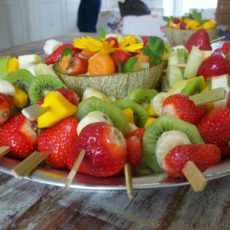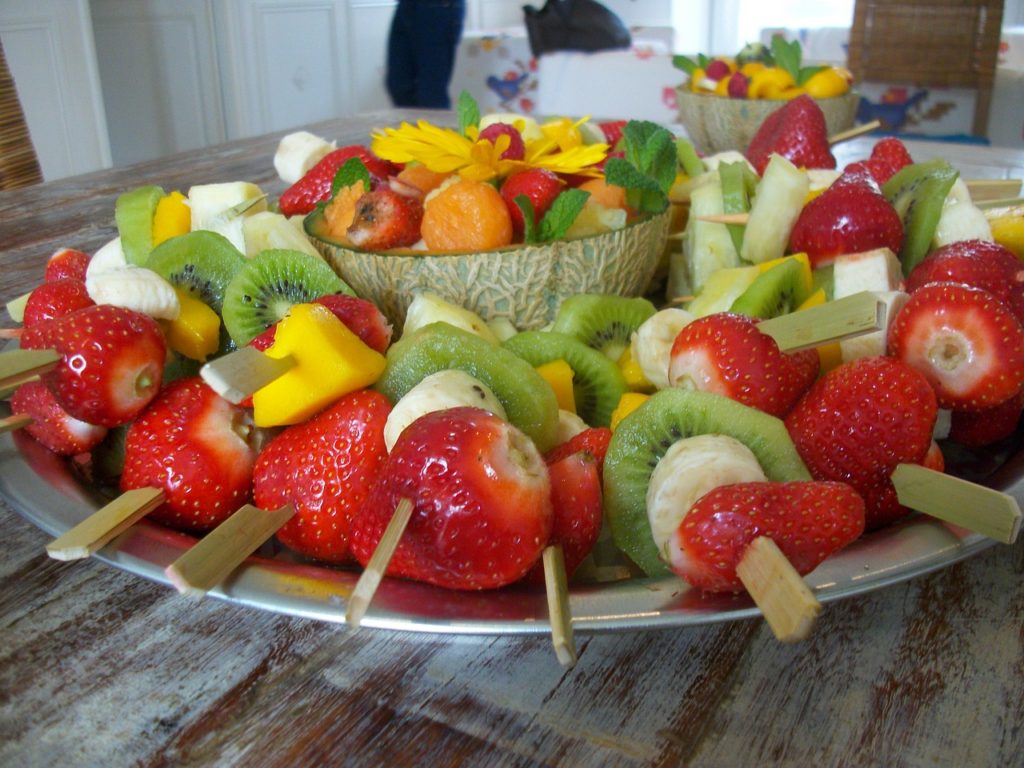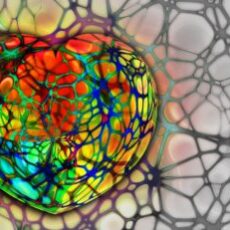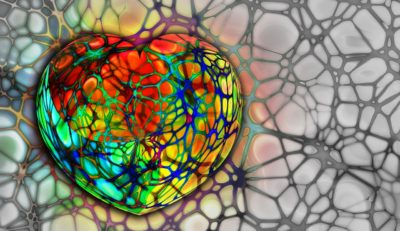Going plant-based is not only good for your health, it’s also essential for our planet, which is in crisis.
Climate change headlines are uniformly awful. This one is terrifying: a recent study estimates that the Atlantic meridional overturning circulation (AMOC), which we know as the Gulf Stream, will collapse mid-century, between 2025 and 2095 with 95% certainty, if carbon emissions continue at the current level. Many uncertainties are built into the study, but it’s clear that collapse of the AMOC is one of many dangerous tipping points that will be disastrous for living beings on our planet.
That’s within the lifetimes of today’s children.
We can blame politics, greed, the government, the fossil fuel industry, or Bitcoin. But it’s also the result of individual choices we make as consumers: to travel, to buy stuff, to eat meat.
It’s been known for years that animal agriculture is a major contributor to environmental damage. A recent study from the University of Oxford really dug into the issue and reported that vegan diets resulted in 75% less greenhouses gases, water pollution, and land use than diets in which more than 3 ½ ounces of meat a day was eaten. Furthermore, vegan diets decrease the destruction of wildlife by 66% and water use by 54%.
It’s a choice. We can change what we eat and feel good about it. Not only is a vegan diet better for animal welfare and our health (as long as it’s mostly whole foods), it helps the planet and every living being on the planet.
It’s easier than ever to go plant-based. (While there is a difference between the terms vegan and plant-based, when applied to diet they mean the same thing.) Amazon lists 50,000 vegan cookbooks. Google “vegan recipes” and be prepared for 40 million hits. Every grocery store stocks alternatives to non-vegan foods. Some of the most popular brands include Gardein, Silk, Miyoko’s Creamery, and Beyond Meat. Most restaurants have vegan options (mark your calendar for Triangle Vegan Restaurant Week, Nov 1-11). Pure Soul, a vegan restaurant in Durham, was just named the #1 best place to eat in the Carolinas. It’s a fun, friendly place with amazing food. Check out their menu and you’ll see what I mean.
To eat healthy as a vegan, you probably should cook from whole foods as much as possible. Saturdays in the summer, I am blessed with a bountiful bag of produce, a Community Supported Agriculture share in Four Dog Farm. Lately, the harvest has included a lot of peppers. Other vegs too, of course, but peppers were the star recently. Bell, poblano, banana, pimento, sweet Italian, red and green snack peppers.
My favorite are the shishitos. They’re smallish and wrinkly, with a touch of heat and no seeds. I strew them on a cookie sheet and stick it under the broiler for three minutes, then flip them over, and broil another three minutes. Their skins will blister. A little salt, then I can hold a stem and eat it entire, one after the other.
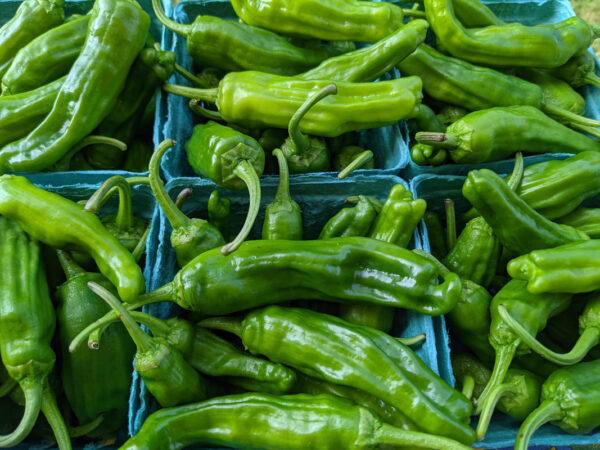
The share also contained a half-dozen bell peppers. Some facts I just learned about bell peppers: they are technically a fruit; they are 92% water; green peppers are the unripe version of the red, yellow, and orange ones; the wild ancestor of all peppers grew in tropical South America, and was brought to Europe in 1493 by Columbus; paprika is just red bell pepper, dried and ground; the bell pepper is the only pepper that does not produce capsaicin, and thus scores lowest on the Scoville scale.
If you have a lot of peppers, try stuffing and baking them. Cut them in half, scoop out the seeds, and fill with, well, just about anything. Bake 25 minutes at 350. These pictured below were stuffed with lentils, rice, squash, and chopped walnuts. Then I drizzled a little plant-based magic over them: vegan queso. This thick and creamy sauce is perfect for any Mexican-style food like tacos, quesadillas, nachos. It makes an excellent dip for chips. Add it to a baked potato or pasta dish.
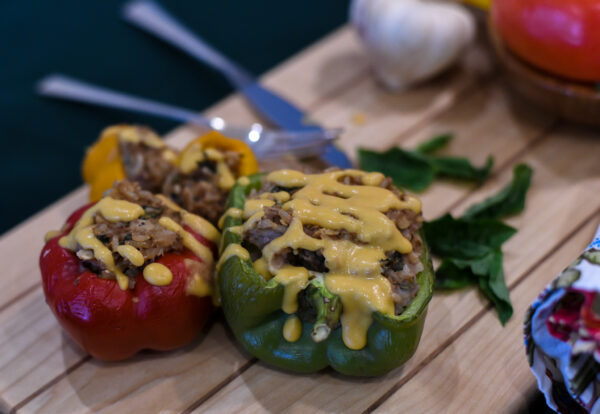
Cooking this way is good for the planet, good for you, and good for the animals.

